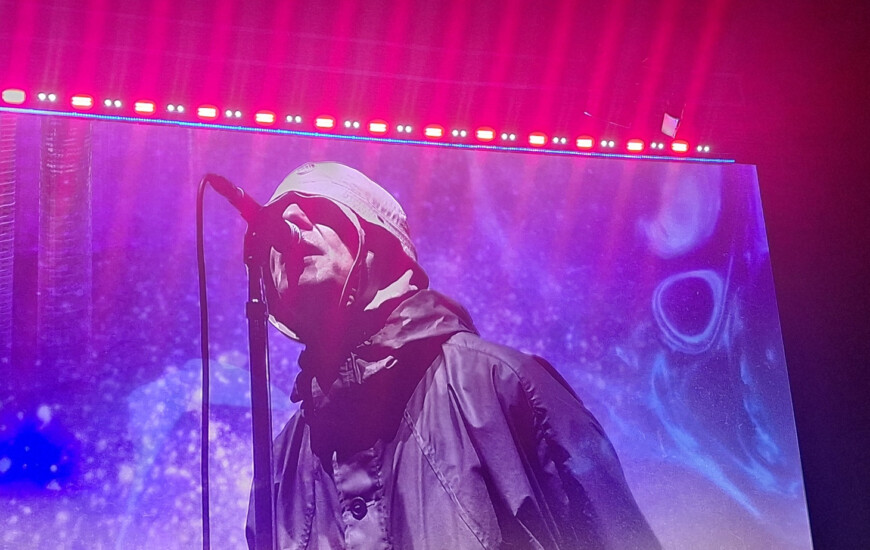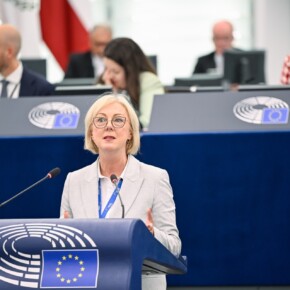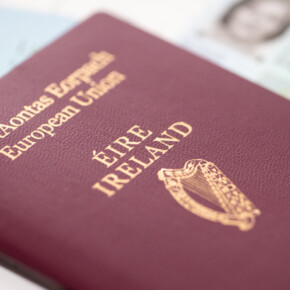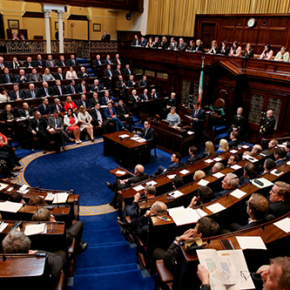Oasis go Mad fer It with triumphant Croke Park shows
Mike Finnerty 27 Aug 2025
In sports journalism, the cliché is that you should never go back to your old club.
Tell that to Oasis.
For two August nights, Drumcondra roared with the strains of 90s rock; it’s like they never left.
Croke Park was the venue and the Brothers Gallagher came, saw, and conquered.
Through a series of events that can only be described as cosmically lucky, this journalist found themselves in possession of a ticket for the Sunday evening gig, and in the spirit of Almost Famous, tried to keep an account of the night Oasis came to Dublin.
The best-laid plans of mice and men, as they say, went out the window as soon as Noel and Liam Gallagher walked out on stage together, arms aloft, and all pretense of professionalism swiftly vanished on this journalist’s part.
Trying to explain why Oasis still has such a hold on people after all this time is both easy to explain and deceptively complex.
Oasis’ music has become somewhat close to modern day folk music.
Someone playing Wonderwall on acoustic guitar at a house party is sure to draw groans and moans for being an obvious joke; that kind of thing doesn’t happen by accident.
Songs like Wonderwall become culturally ubiquitous through a combination of saturation, shared cultural memory, and nostalgia, something that Oasis never had a problem with.
It’s the same reason Mr Brightside by The Killers or Seven Nation Army by The White Stripes still looms large over modern rock music; a massive sing-along factor in the former case, a simple, easy riff to remember in the latter.
Oasis’ secret weapon is combining both; the big Oasis sing-along stadium anthem like Some Might Say fits just as well on a concert setlist or a Spotify playlist as one of their more complex tracks like Whatever.
For some people born after Be Here Now was released in 1997, the height of Oasis’ global superstardom, the band that split up in 2009 making a big return in 2025 might be somewhat hard to grasp; but Oasis don’t necessarily fit into the “golden oldies” moniker.
Four number one singles in Ireland and eight chart-toppers in the UK, all in an era where people actually went out to buy a hard copy of the song they liked, is a testament to something.
When we wrote about U2 earlier this summer, we posed the question of how does a band that hasn’t bothered the charts since 2009 stay relevant in the streaming era; the answer, in both cases, is having a killer back catalogue.
At their very best, Oasis were a band who boasted b-sides and album tracks just as good as the big singles, which meant that tracks like The Masterplan, Cast No Shadow, and Half The World Away share equal prominence in the setlist along with the staples Live Forever, D’You Know What I Mean and Supersonic.
The setlist was largely the same as what the band has been performing on their UK dates (Hello started the setlist, the massive, huge songs like Don’t Look Back In Anger and Wonderwall were left for the encore) and that has always been the Oasis formula; don’t mess with perfection.
The cut-off point for the setlist appears to be nothing from after 2002’s Heathen Chemistry, meaning tracks like Lyla, The Importance Of Being Idle and The Shock Of The Lightning were left off the setlist.
Oasis’ setlist coincides with Manchester United’s glory days; from 1994 up until 2002.
The Manchester City fans played with a cardboard cut-out of Pep Guardiola on the stage with them; when Liam Gallagher caught sight of a cheeky fan who unfurled a Manchester United banner, the singer saw red, telling the crowd “I’m not f***ing happy with that!”
Ever since the first show in Cardiff in July, the setlist has largely remained the same, and you get what you pay for with Oasis.
Introducing Don’t Look Back In Anger, Liam Gallagher asked the crowd, “how long have you been waiting to sing this song with all your friends in a big stadium? You’re about to find out.”
That, right there, might be the secret; Oasis’ music cuts across all walks of life and the Croke Park crowd was a testament to that.
Young men in football jerseys, who would have been in primary school when the Gallaghers called it quits in 2009, shared the pitch with middle-aged folk who came up with Oasis’ music in their 90s heyday.
For all the sniffing that Oasis represents a certain kind of “ladishness” and a return to late 90s cultural hedonism, there is an undeniable sense of community and camaraderie at an Oasis concert that would charm even the most hardened critic.
If nothing else, Oasis’ two-sold out shows means that Dublin’s bucket hat sellers are now rich enough to rival Jeff Bezos.
In our 2023 review for The Equalizer 3, we made the point that someone like Denzel Washington is a movie star, and most Hollywood actors are just that – actors.
The difference between a movie star and an actor is all about gravitas or charisma, and Liam and Noel Gallagher are examples of rock stars instead of musicians.
That famous Liam Gallagher pose – big parka, sunglasses on, arms behind his back, neck craned – is a thrill to see up close and personal.
Even for someone who isn’t a fan of Oasis (and, we are told, there are plenty of people who aren’t fans), seeing a rock star like Liam Gallagher in his pomp, knowing he has 80,000 Croke Park attendees eating out of the palm of his hand, is the kind of cultural myth we simply don’t get anymore.
While it is true that the gigs were overshadowed by the dynamic pricing fiasco on Ticketmaster, which represents everything wrong with modern music and the hyper-commercialisation of the arts, there is no denying these gigs were the triumphant comeback people hoped for but didn’t expect.
When news of the reunion surfaced last summer, a million and one jokes were made to the effect of the Gallaghers fighting each other on stage and quitting before a chord was even played.
What we see with Oasis in 2025 is a band that, yes, became global megastars over 30 years ago and are attempting to recapture past glories, but it works really well in this instance.
In other reviews of the gigs, critics make tutting references to “nostalgia” as if it’s a bad thing.
When deployed properly, nostalgia can be an incredibly powerful thing in music and the arts.
When it’s done badly, it’s cheap and annoying; with Oasis, it’s earned and triumphant.











